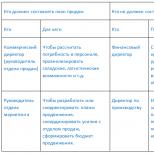What is a landing?
Landing pages are targeted web pages dedicated to specific topics that help:
- attract more visitors;
- convert visitors into potential customers.
The trick is that a landing page goes beyond visual aesthetics or design. You need to make sure that all the proper elements are displayed correctly on each page. We'll cover these important parts and then dive into explaining what to look out for when testing (and why) to improve your ROI.
First, let's answer the question: what is a landing page?
Landing page definition
A landing page is a web page that directs the user to one specific goal - to buy a product or order a service. It is devoid of navigation and other distractions, and appears as separate pages on your site.
_________________
The main goal of a landing page is to promote your commercial offer.
_________________
Landing pages are:
- Guides that engage the user and then direct them to your product in order to sell the product.
- Business – direct users to sign up for a newsletter or fill out a form, usually in exchange for a free e-book, consultation, etc.
In the landing page, you indicate special offers or leave links. This is where you find your potential customers. Landing pages are optimized for conversion, which means that these pages generate more bang for your buck: more signups and more sales for your business.
Landing pages are an important part of your internet marketing strategy. Are you ready to add them to your site? Or, if you already have a few landing pages, you might want to consider expanding your strategy by adding more?
Why does your site need more landing pages?
Companies that increased the number of landing pages from 10 to 15 received 55% more customers than before, according to a HubSpot report that analyzed the effectiveness of marketing metrics for 7,000 small businesses.
More landings - better results. This is a scalable strategy. But keep in mind, these landing pages don't have to exist on their own. They are part of one harmonious system.
How Landing Pages Work
Each page is one component of a larger sequence of pages where the visitor sees a call to action or message.
Here the information is delivered in the same way that the initial interest was generated and provides some way to exchange information for the offer. At the end is a simple "Thank you" that lets visitors know that you have successfully received the information and alerts them where and when they can expect an offer.
Benefits of Landing Pages
Landings provide unique content , which increases the performance of organic search (or SEO). They are great for moving along the long tail.
This great sales tool like Pay Per Click . The user sees the product and its benefits, and can buy it without leaving the page.
Selling pages provide an opportunity expand product information presenting it as a story. You can use supporting materials, such as images or videos. This increases customer confidence.
Last but not least: individual landing pages open up a wide field for experimentation . You can test the posts to see which ones work best with the audience. Or check out product demos, opportunities to position your services against the competition.
Landing allows test on a small scale , discover, what works and what doesn't and then communicate that information to the rest of the site.

Now that we know what landing pages are and why they are so effective, let's take a look at how you can get started using them.
5 elements of a good landing page
Whether we're talking about a page for your consulting agency or a product page, it all starts with putting the basic ingredients together.
1. Page design
As stated earlier, people visit this page for a reason. So keep the user! Have one main goal, and one primary message per page, without a lot of extra elements that distract people from filling out a contact form or from the purchase button.
Removing menu links will help you focus on the most important elements of the page. Set one main path, avoid confusion in favor of simplicity . Although in some cases it is good to add another link or two, it is better to limit the possible elements.
2. Headlines and value propositions
Headlines are short sentences in disguise. Show what your product or service offers with a simple, easy to understand message.
Another way to create a headline is to think about what people are getting from your product or service.
3. Pictures and videos
A large image or video shows the product from all sides, makes it possible to touch it as if.
It is not always easy to explain in written text how your services will benefit people. But a simple story (like a video) can help convey the idea, explain why your offer is so valuable .
4. Call to action
Calls to action should be big, obvious, compelling . The user should see what needs to be filled in and which button to press.
One important aspect that is forgotten. How to use design to help distinguish between multiple calls on a page? The primary action should be more visible: make a bright button, use animation. The secondary can be issued in the form of a regular text link.

5. Trust indicators
You know your product is great. But how do other people know about it?
The best way - use customer reviews
. Display reviews at the bottom of the page. Logos of companies we worked with, awards, prizes won. You can even use statistics to show the number of clients as a way to demonstrate trust.
What to test? And why?
You now have a beautiful landing page and are ready to start A/B testing…
Unfortunately, not so fast.
Testing isn't everything. Before starting, you must first find out:
- Who comes to the specified landing page?
- Where do they come from?
Given this information, you will be able to understand how the landing page should look like.
Here are a few items you can test:
1. Layout
Knowing the target audience, and where it comes from, you can think about the layout of the page. For example, customers who are already familiar with the brand come to you. The best choice in this case is a very short page. You do not need to write long texts about your benefits. They know you, they trust you, they understand you. A simple direct suggestion will work.
Another thing is if users have no idea who you are. They may be more interested in additional videos, customer testimonials, and supporting documentation. Such people need a long landing page, with a detailed history of the company and its achievements.
2. Text content
Once you figure out who your page is aimed at, you can start writing texts. Within the same industry, your customers may be:
Engineers;
Sales managers;
General directors.
The engineer will be interested in the technical aspects of the product, the sales manager will be interested in numbers and statistics, and the CEO will be interested in where the income and benefits come from. Therefore, for all three layers, the text should be different. Understand which of them is your client.
3. Tone
Headings are very important. But not ignore tone in headlines .
The same idea can be conveyed in different ways. With different intonation.
Let's go back to the target audience. It needs a special approach. Companies tend to respond quite well to positive messages.
However, negative messages tend to be more impressive, especially at the beginning of a relationship with a site visitor who doesn't know the brand well enough. Typically, this means that you help people solve their problems.
4. Visual elements
Photos, graphics and videos can hold the user's attention. Video is worth its weight in gold, but be careful. It requires careful script coordination.
Look again at the selected photos. Are they in the right place? How is their quality?
5. Calls to action
Last but not least: analyze how and what calls to action you use .
For example, if you are using a form, how many fields are absolutely required? Shorter forms with fewer fields get higher conversions.
Purposeful creation of a landing page
Modern websites are not static, informative brochures. They exist for a purpose, and tend to attract new customers and keep old ones.
_________________
Landing pages are a necessary component of your marketing, helping to deliver a very specific offer to a very specific person. They can inform, convince, motivate and satisfy visitors by providing a useful solution to a painful problem.
_________________
Want to improve your results? Start by creating a landing page. Include the main items listed here.
Then try to take a step back and understand the big picture by analyzing who is coming to your site, where and from where. By seeing the entire customer journey from start to finish, you will ultimately decide what to put on each page.
Instead of thinking about what your landing pages look like, focus more on how effective they are.





